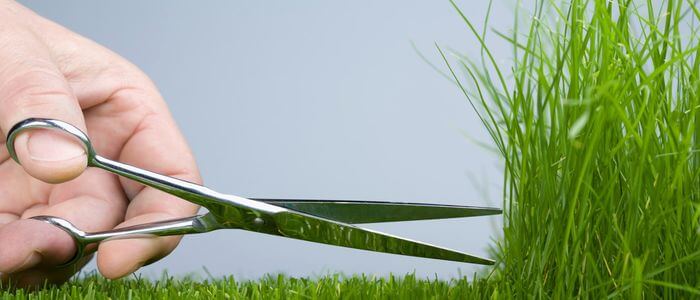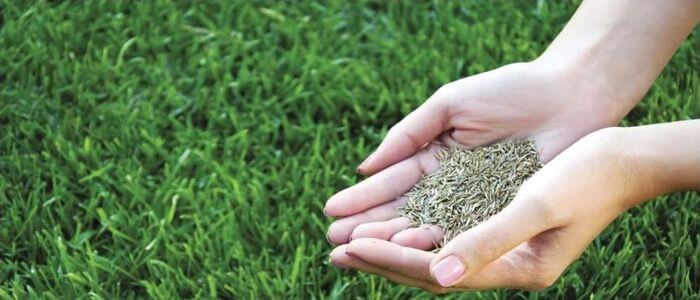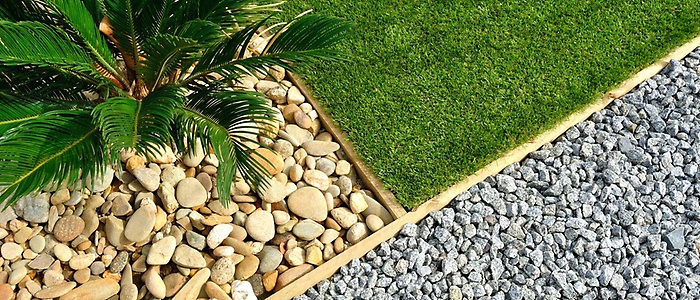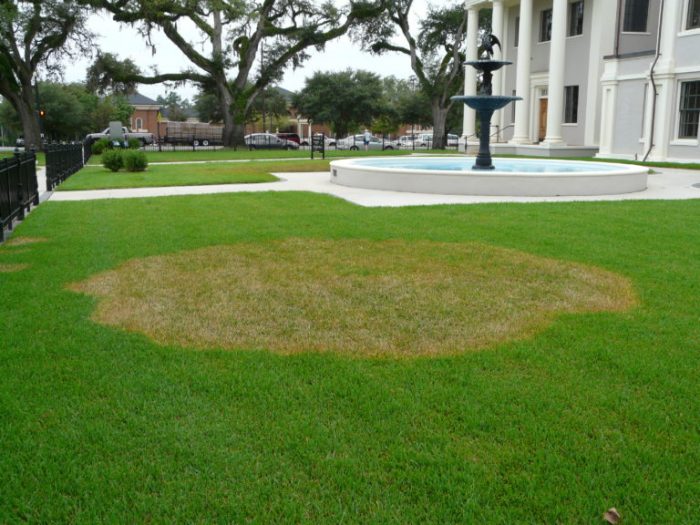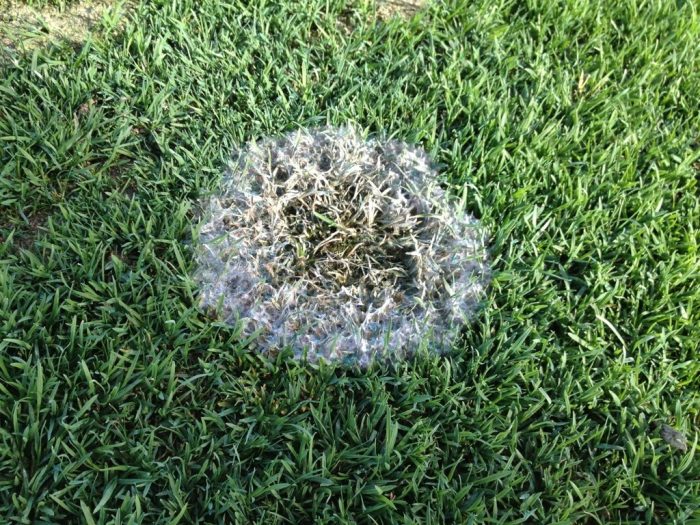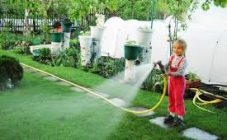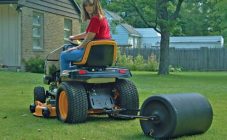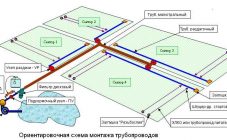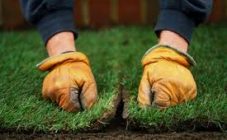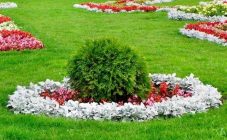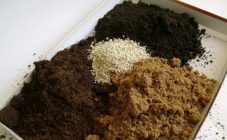Content:
When buying a summer cottage, many people think about how to make a lawn correctly. If the soil is level, then creating a neat green lawn will not be difficult - it is enough to regularly mow the grass on the site. However, if there was a forest or dense bushes in the indicated area, then another question arises: how to make a beautiful lawn on an overgrown area with your own hands. In this case, the land needs digging, which means that you will have to prepare and plant the lawn according to all the rules.
Lawn benefits
Well-groomed grass gives the site a neat look. This picture looks very beautiful. With proper lawn laying, caring for it in the future will be easy. In addition to its decorative qualities, the lawn can be of practical use. In particular, the planted grass will absorb dirt and dust from the air. In addition, due to the lawn, the humidity level will increase, due to which the summer heat will cease to annoy the owners.
Any summer resident or gardener can make a lawn on the site with their own hands. To create truly beautiful sites, encyclopedic knowledge and special equipment are not required at all. The main thing is to follow all the rules and step-by-step recommendations, to do the work efficiently and slowly. Only then will it be possible to make an excellent lawn with your own hands, a detailed guide will help a novice gardener with this. However, it is better for lazy summer residents not to take up this venture, since they still have to work hard to equip the lawn with high quality.
What is a lawn
This is a specially designed, leveled area formed by low-growing plants and turf. Lawns are divided into several types:
- Sports. They are found at stadiums and other sports grounds, for example, hippodromes, football fields.
- Decorative. Serve to decorate gardens, parks, summer cottages, city boulevards.
- Special purpose. They are laid on the slopes of railways and highways, airfields.
Ornamental lawns, in turn, are divided into several classes. The criterion here is the location and composition of vegetation:
- First class (highest). This includes the so-called parterre (English) lawns. They can be seen in the architectural compositions of the garden, near houses, fountains, sculptures, and reservoirs. The main condition for their design is that the area of the main background should prevail over flower beds and other components of the composition. If the size of the territory of the flower garden coincides with the area of the lawn, the integrity of the picture disappears, and excessive diversity appears.
- Second class. This category includes garden and park lawns. In this case, the grass should be strong and hardy, resistant to damage, drought and shade, while not devoid of decorativeness and longevity. It is desirable that a strong turf layer is present.
- Third class. This category includes meadow lawns. Arrangement of these lawns is necessary to improve the already existing grass stand. Sod is treated superficially.
How to plant a lawn in the country with your own hands
The process of forming a lawn includes preparing the site, planting seeds or laying a roll lawn, as well as further lawn care.
Site preparation
Before setting up a lawn, you need to carefully prepare the ground. First you need to remove all garbage and unnecessary items from the territory. The soil must absorb moisture well so that the plants do not suffer from moisture deficiency. It is important that water does not accumulate on the surface, otherwise the plants will die. Therefore, clay soil is inappropriate here. In places where water accumulates after irrigation and precipitation, drainage needs to be done.
First, the fertile soil layer is removed, gravel is placed on top and trampled on it. Next, sand is poured (the layer thickness is at least 10 cm) and it is also tamped. The previously harvested fertile soil layer is laid on top and carefully rolled with a roller, the weight of which should be at least 100 kg.
In preparation for sowing, you need to carry out a complete digging of the soil. The time for this event is chosen according to the weather conditions. It is important that the soil is not dry. In the process of digging, stones, roots, weeds are removed from the site, and clods of soil are broken. After the earth dries up and is slightly weathered, you can start compaction.
It is best to check if the surface is level enough with a straight board 2-3 m long. After tying a rope to it, the board should be dragged all over the area. Then you can walk on the ground in small steps, trampling the soil, eliminating all irregularities, hills, bumps. At the same time, it is recommended to level the ground, clean it of debris with a rake, after which it is advisable to tamp the surface with a roller.
After all these measures, it is recommended to keep the site under control: within a month you need to remove weeds, roots of shrubs and trees. To speed up the process of cleaning the area and make it the most effective, it is worth provoking weed germination. To do this, the site is watered immediately after digging and leveling it.
Planting seeds
As a rule, mixed herbs are planted, and not their individual varieties. The fact is that such vegetation takes root better and faster in a new place, despite the different climatic and weather conditions. Homogeneous grass is not capable of this. Mixed vegetation includes:
- field grass;
- perennial ryegrass;
- fescue;
- meadow bluegrass.
Before sowing the grass, it is important to stock up on enough seeds. For 1 hundred square meters, you will have to spend 4-5 kg of planting material. The ideal time to sow is late spring or late summer. During these periods, the soil is sufficiently moist and well warmed up. Sowing is allowed throughout the summer season. In hot weather, plants need to be watered regularly and protected from wind and birds with shelter.
When sowing, it is advisable to use boards, skis or plywood so as not to leave marks when walking on loose soil. Before the procedure, the seeds are mixed by adding dry soil or sand to them in a 1: 1 ratio. The mixture is divided into 2 identical parts: one is scattered over the surface of the soil along the site, the other is across. More seeds should be sown around the perimeter of the future lawn than in the center. Then they are lightly pressed into the ground to protect them from drying out.
Watering is carried out in the evening by sprinkling (another method can provoke the leaching of seeds). Moisture must penetrate 10 cm deep. At the same time, accumulation and stagnation of liquid should not be allowed. In dry weather, in no case should the seeds be left without watering (gardeners and gardeners usually make this mistake, hoping for an early precipitation). Seedlings germinate 1-3 weeks after planting. The exact time depends on the weather.
Lawn care after planting
Now it is clear how to make a lawn, only this is not enough. Quality care is no less important.Walking on the lawn often is not recommended during the first year. It should also be protected from pets. The basis of lawn care is its mowing. It not only maintains a neat appearance, but also helps to get rid of weeds. To do this, you need to start a lawn mower in the country. 2-3 procedures are enough for the weed to disappear forever. Thanks to mowing, fresh shoots are formed in the plants, the root system grows. It is important to take into account that shearing is stressful for the plants. To get the fastest possible recovery, it is enough to cut no more than 1/3 of the stem at a time.
The density of vegetation and its resistance to mechanical damage largely depend on the condition of the roots. Frequent mowing and constant walking around the site lead to poor rooting of the grass, as well as a decrease in root mass. Therefore, it is very important to give the plants a rest. This means that the ground part of the grass must have time to grow 12-15 cm in height.
Gravel lawn
Many who are going to make a lawn from scratch with their own hands are thinking about such an alternative to the classic version of gravel. It certainly has its advantages. In addition, gravel does not interfere with the penetration of air and moisture into the lower layers of the soil.
There are no requirements for the area of coverage: gravel can be present in the garden both in large quantities and in small parts in its individual zones. The arrangement of a gravel lawn is not particularly difficult. The important point here is a reliable border. To prevent the material from scattering and keeping its shape, reliable and flexible plastic curbs are needed. They should rise above the soil by about 2-3 cm. To reduce the number of weeds and prevent the formation of ruts, geotextiles are placed under the cover. Weeds that sprout from seeds from above must be weeded out. In places with increased load (for example, where a car and heavy furniture are parked, people often walk, etc.), a plastic lawn grating is laid on top of the geotextile, and gravel is sprinkled on top (layer about 2 cm).
Diseases and pests of the lawn
To prevent the occurrence of diseases of the vegetation that makes up the lawn, preventive measures must be taken. These include:
- prevention of stagnation of moisture in the soil;
- timely cleaning of dead parts of grass;
- high-quality feeding;
- prevention in winter (try not to step on the lawn);
Different types of herbs have different susceptibility to disease. Since the lawn consists of mixed vegetation, in general its susceptibility to infections is quite high. All these problems lead to the fact that the site becomes unkempt, ugly. Among the common diseases are the following:
- Fusarium. If the manifestations are small, you need to immediately treat the grass with a fungicide. If the lesions are strong, they spray the entire territory of the garden, while the foci of infection are removed completely together with the soil and re-sown with grass.
- Powdery mildew. It is necessary to stop feeding the lawn and treat it with a fungicide. Further, the grass must be mowed and re-processed.
- Rust. In this case, abundant fertilization and regular watering are required. The damaged areas are mowed.
- Red threadiness. It is also enough to apply fertilizer, comb the turf and remove debris from the lawn.
Among the parasites are called:
- lichen;
- moss;
- mushrooms;
- seaweed.
To get rid of lichen, soil liming is done. Due to this, the level of its acidity decreases, which provides the lichen with favorable conditions for development. The second step is regular feeding.You can eliminate the algae problem by systematically combing the grass.
To remove parasites, such as, for example, white larvae, you can make a mixture of earth and washing powder. The mixture is scattered over the site.
The question of how to make a lawn with your own hands is solved quite simply. If you follow all of the above step-by-step instructions and recommendations, you can achieve remarkable results in the formation of a lawn in a garden, summer cottage or other area.


